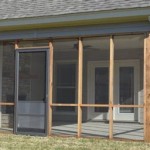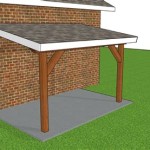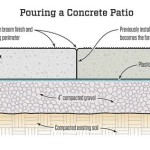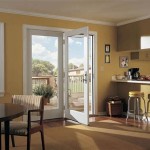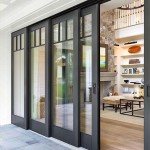Outdoor Patio Fencing for Restaurants: Creating a Welcoming and Secure Ambiance
Outdoor patios have become increasingly popular additions to restaurants, offering a unique dining experience and expanding seating capacity. However, creating a functional and aesthetically pleasing outdoor space requires careful consideration of various elements, including fencing. Outdoor patio fencing plays a crucial role in defining the boundaries, enhancing privacy, and ensuring safety for both patrons and staff. This article explores essential aspects of outdoor patio fencing for restaurants, providing insights into material choices, design considerations, and regulatory requirements.
Material Choices for Outdoor Patio Fencing
The choice of fencing material is crucial for outdoor patio spaces, as it impacts durability, aesthetic appeal, and overall cost. Common materials used for restaurant patio fencing include:
- Wood: A classic and versatile option, wood fencing offers natural warmth and can be stained or painted to complement the restaurant's decor. However, it requires regular maintenance to prevent rot and insect damage.
- Vinyl: Low-maintenance and durable, vinyl fencing is resistant to weather damage and insect infestation. It comes in various colors and styles, offering flexibility in design. Vinyl fencing is also a cost-effective option in the long run.
- Metal: Metal fencing provides a modern and industrial look, with options like aluminum, wrought iron, or steel. Metal fencing is sturdy and requires minimal maintenance, but it can be more expensive than other materials.
- Composite: Combining the benefits of wood and plastic, composite fencing offers durability, low maintenance, and a natural aesthetic. Composite fencing is often more expensive than wood but requires less upkeep.
The best material choice depends on factors such as budget, desired aesthetic, maintenance requirements, and local regulations. Wood fencing is a popular choice for traditional restaurants, while metal fencing aligns with modern or industrial themes. Vinyl fencing offers a good balance between durability and cost-effectiveness.
Design Considerations for Outdoor Patio Fencing
Beyond choosing the material, restaurants need to consider the design of their outdoor patio fencing to create a welcoming and functional space. Some important design considerations include:
- Height: The height of the fencing should be sufficient to provide privacy without obstructing the view. Consider city ordinances and building codes regarding fence height limitations.
- Style: The style of the fencing should complement the restaurant's overall design and ambiance. Traditional restaurants may opt for picket fences, while modern establishments might prefer sleek metal panels or latticework.
- Gates: Gates are essential for access to the patio and should be sturdy and easy to open. Consider using automatic gates for convenience and security.
- Lighting: Proper lighting is crucial for safety and ambiance. Incorporate lighting fixtures along the fence line for a warm and inviting feel.
- Privacy: Balance privacy with views. Consider using plants or trellises to enhance privacy without blocking the view entirely.
A well-designed fence should not just be functional but also enhance the aesthetic appeal of the outdoor space. It should complement the restaurant's décor, creating a cohesive and enjoyable dining experience for patrons.
Regulatory Requirements for Outdoor Patio Fencing
Restaurants are required to comply with local building codes and zoning regulations regarding outdoor patio fencing. These regulations can vary depending on the location and may address factors such as:
- Height restrictions: Maximum allowable fence height, which can vary based on the location of the property.
- Material specifications: Prohibited or required materials for fencing construction.
- Setbacks: Minimum distances required between the fence and property lines.
- Accessibility: Requirements for accessibility for individuals with disabilities, such as ramps or gates with sufficient width.
- Fire safety: Regulations regarding fire-resistant materials and spacing.
It is crucial for restaurants to consult with local authorities and obtain necessary permits before constructing or modifying outdoor patio fencing. This ensures compliance with regulations and avoids potential legal issues.

Restaurant Patio Fences Peerless Fence
Restaurant Patio Fences Peerless Fence

Restaurant Patio Railings Dcs Industries

How To Choose Sidewalk Barriers And Not Mess Up Your Restaurant Storefront

St Louis Restaurant Patio Fence Professionals Mfos

Outdoor Restaurant Patio Fencing Cafe Barriers Nyc

Restaurant Patio Partitions

Wrought Iron Fence Or Aluminum For Restaurants And Outdoor Patios Shop Blog

How To Choose Sidewalk Barriers And Not Mess Up Your Restaurant Storefront

Glass Fencing For Outdoor Dining Spaces And Restaurants Pool Fence Railing Installer

